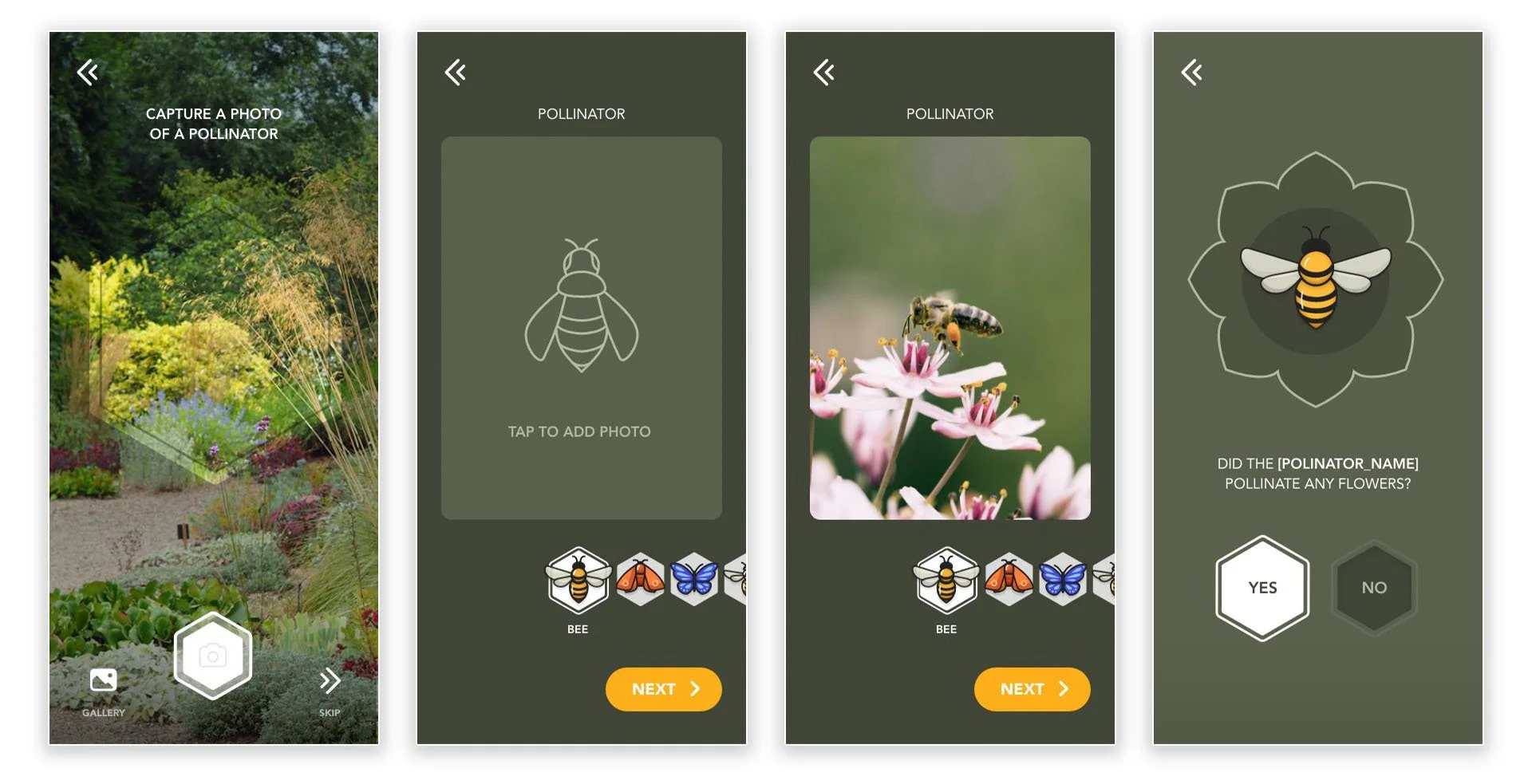Bee-1
Building a Community-Driven Pollinator Research Tool with Mobile Tech
Bee-1 is a purpose-driven organisation focused on protecting and understanding pollinators through education, innovation, and engagement. With the UK facing a severe decline in pollinator species, Bee-1 sought to empower citizens to take part in vital environmental monitoring using their mobile devices. They approached CEMET with a clear goal: to develop a mobile application that would allow users to easily record and share pollinator sightings—creating a scalable, geotagged dataset to support ongoing research and conservation efforts.
What Did We Do?
CEMET developed a pre-release iOS mobile application using .NET MAUI, giving Bee-1 a robust and scalable foundation for their pilot product. The app enables users to take photos of pollinators in the wild and manually tag key details, including species type and the predominant flower colour or background hue. Our developer, Luke Dando, implemented automatic geolocation, date, and time capture for each sighting, helping to build an accurate, time-stamped dataset for researchers and conservationists.
In addition to supporting image-based sightings, the app also allows users to log pollinator encounters without an image—expanding its utility across variable network conditions and user behaviours. Each submission is stored in a cloud database, along with its associated metadata, and linked to an information panel that shows the user key facts about the species they’ve recorded. This blend of data collection and instant feedback fosters both learning and long-term engagement.
To support broader analysis, CEMET also delivered a basic web interface to view and explore stored data—offering Bee-1 the ability to begin examining patterns in species distribution, flower preferences, and user participation rates. Our UX designer ensured the interface followed accessibility and clarity principles, delivering intuitive navigation and simplified data entry flows suitable for use in outdoor environments and by a diverse audience.
Design
The user experience was designed to be minimal and purposeful. Working from core behavioural design principles, we reduced friction by streamlining the number of steps required to record a sighting, placing emphasis on large, high-contrast UI elements for field use in bright light. Guided by Fitts’s Law, the interface prioritised tap zones and accessibility for all user types—including children, older users, and those with attention or vision needs.
We chunked the user flow into digestible stages, simplified content layouts, and supported keyboard input and screen-reader compatibility from the outset. Geolocation and time stamping were fully automated, and an intuitive tagging system was designed to enable users to easily identify both pollinator and flower features from a predefined list. Where possible, the app aligns with existing iOS conventions to minimise learning curves.
Alongside interface development, we provided comprehensive guidance on feature planning, accessibility, and long-term UX improvements. These included data visualisation approaches, seasonal re-engagement strategies, and accessibility upgrades—such as voice-driven input or dark mode support.
Future Facing
As part of our knowledge transfer process, CEMET outlined a strategic vision for Bee-1 to build on the success of their initial prototype and continue evolving the app to better serve both users and environmental researchers. One key recommendation was to explore the integration of an AI-powered Large Language Model (LLM) capable of automatically identifying flowers from captured images. This would significantly reduce the need for manual input, improve data consistency, and enhance the educational value of the app by instantly providing users with accurate species information.
We also strongly advised the development of a full-featured analytics dashboard, which would transform raw user submissions into meaningful insights. This web-based interface could allow Bee-1’s team to visualise pollinator activity trends across regions and seasons, offering critical tools for planning conservation activities and engaging stakeholders. To maximise reach, we suggested prioritising the development of an Android-compatible version of the app, allowing a more diverse demographic to participate and enriching the geographic scope of data collected.
In addition, we discussed the potential for personalised user experiences by creating adaptive dashboards based on user type—simplifying the interface for younger participants while offering in-depth summaries and alerts for researchers. We also encouraged the use of contextual prompts, such as location- and time-based notifications, to engage users during optimal pollinator activity and maintain interaction throughout the year.
Lastly, we recommended a rigorous approach to user testing, ensuring accessibility and usability improvements are informed by real-world feedback. This includes tailoring experiences to suit different cognitive needs, screen sizes, and environmental conditions. Together, these future enhancements would enable Bee-1 to create a more intuitive, impactful, and scalable tool for public engagement and ecological research.
Impact
The first phase of Bee-1’s mobile app lays the groundwork for a highly scalable, data-rich pollinator tracking system—one that empowers everyday citizens to meaningfully contribute to environmental research. With core functionality already delivered, Bee-1 is now equipped to begin collecting real-world pollinator data, testing the system with users, and expanding features in response to environmental and user needs.
This collaboration combines CEMET’s experience in mobile UX and cloud infrastructure with Bee-1’s domain expertise and conservation mission. Together, we've delivered a tool that brings science and the public closer together in service of pollinator protection.
CEMET is proud to continue to support Bee-1 through the development of this new app. To find out more about their latest work visit their website
This project is funded by the UK government through the UK Shared Prosperity Fund and supported by Swansea City Council.



